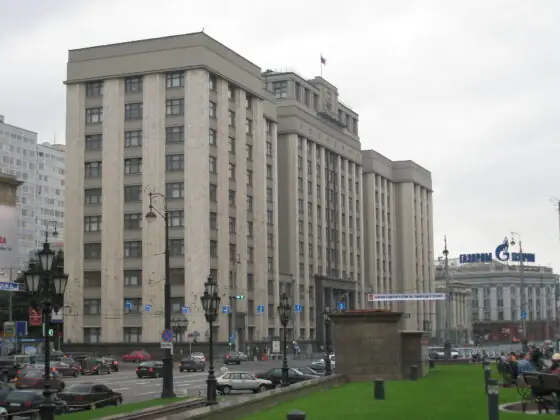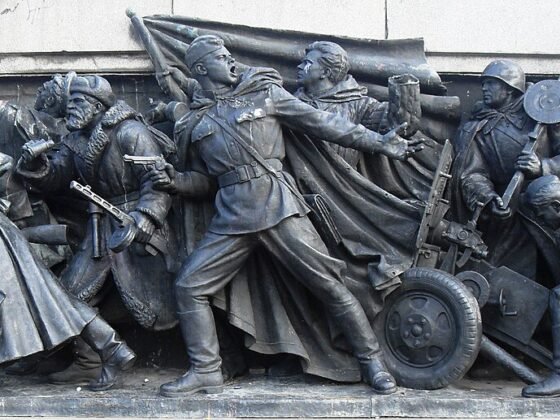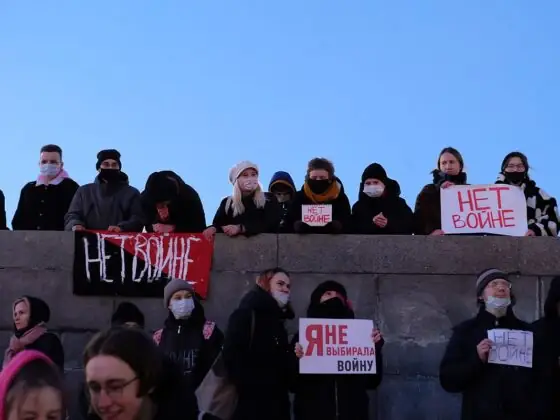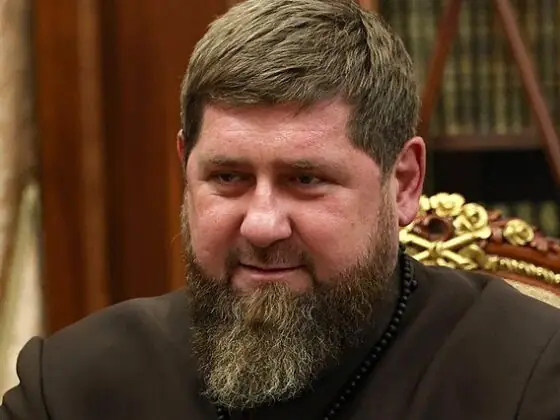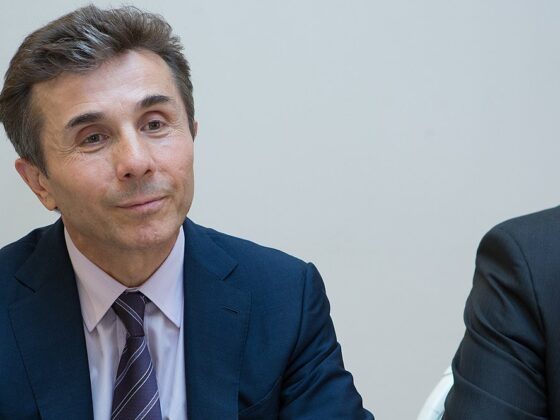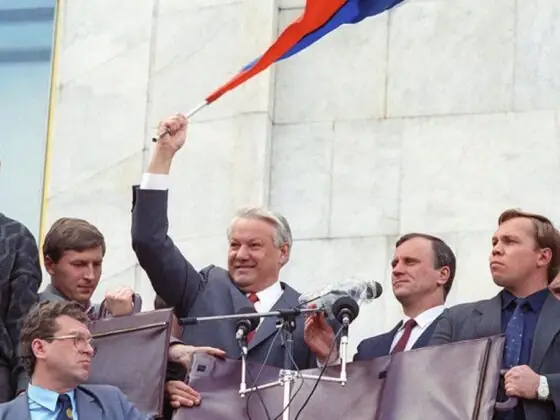Image credit/license
Since the beginning of the full-scale war in Ukraine and the Russian government’s turn to massive public spending, the term “military Keynesianism” has been increasingly used to describe Russia’s transition to a war economy. In 2024, military and security spending reached 40 percent of the federal budget. This includes various lump-sum and regular payments to soldiers and their families, which were as much as ten times average salaries in poor regions of the country. Yet the discussion of Russia’s military Keynesianism often underestimates or downplays conflicts among Russian elites, especially over the monetary policy of the Central Bank of Russia (CBR). These conflicts go beyond traditional Keynesianism, with its focus on countercyclical government intervention, full employment, and price stability, which is not necessarily the case in war economies.
Escalating Disagreements over Monetary Policy
In October 2024, the disagreements over Russia’s monetary policy reached a rhetorical fever pitch when the head of the state-owned bank VTB, Andrei Kostin, claimed that CBR Governor Elvira Nabiullina suffered from irrational mood swings: “Where women lead the process, there is little that is impossible.” Such faux pas aside, opponents of the current CBR monetary policy were in an uproar after the bank raised its key interest rate to 21 percent—the highest level in two decades. Moreover, the CBR did not rule out another rate hike to 23.0 percent or 23.5 percent in December, which would be the fourth in the last 12 months. With inflation at 8.6 percent, the key rate of 21.0 percent means a real interest rate of 12.4 percent, one of the highest in the world. The Russian stock market reacted to the October hike with an immediate loss of more than 6 percent.
The CBR rate decision signals that its monetary policy will not support the government’s spending indefinitely if that results in a sustained rise in inflation. Moreover, the bank has stuck to its prewar inflation target of 4 percent, which it seeks to at least come close to achieving. Its leadership justifies the high key rate by saying that inflation cannot otherwise be kept under control. Demand far outpaces supply, and production cannot catch up, which makes the economy close to overheating. Among the reasons cited for the October hike is a massive labor shortage in Russia, as well as “logistical bottlenecks” and “increasingly complex supply chains” due to Western sanctions. Another argument is that previous easing of banking regulation has allowed banks to aggressively increase lending without maintaining a more liquid asset structure and additional capital buffers.
Nabiullina is supported in her assessments by German Gref. Recall that Gref, an economist with libertarian leanings, served as President Vladimir Putin’s economy minister in 2000–2007, continuing the neoliberal reforms that had stalled in the 1990s. After being replaced by Nabiullina at the Economy Ministry, Gref was named head of state-owned Sberbank, now Russia’s leading lender, which he has spent recent years transforming into a tech group. The president has also long supported a restrictive monetary, anti-inflation CBR policy. For Putin, one of the biggest lessons of the 1990s is that uncontrolled inflation undermines the power of political leaders (other lessons include not to borrow heavily abroad and not to rely financially on Russia’s non-state oligarchs, which partly explains the extremely low level of public debt in Russia today).
Opponents of the current CBR policy argue that rising borrowing costs do not address the causes of inflation but only dampen household demand and stifle investment in the Russian economy, which has increased with the war economy and sanctions. Such arguments come from a wide range of actors, including Russia’s “real economy,” the parliament, Deputy Prime Minister Alexander Novak, academic economists, and think tanks. The Center for Macroeconomic Analysis and Short-Term Forecasting warns of stagflation in 2025 (the simultaneous occurrence of economic stagnation and high inflation). Meanwhile, investment is urgently needed to achieve a long-delayed rise in productivity through rationalization and automation, which would free up labor resources. Evgeny Kogan, the president of the Stolypin Club, a private business association founded by former business ombudsman Boris Titov, predicted on the club’s Telegram channel, Stolypin 2.0, that divergences among companies would continue to grow: “Some are lucky to get government orders, some get preferential loans, but the rest will pay in full for the CBR to keep inflation in check. Some will go to the morgue, as they say, for the sake of the ‘average hospital temperature.’”
The recent rate hike is part of a package of measures aimed at curbing demand, which has been fueled by drastic wage growth and generious social benefits for soldiers and their families. These measures include the suspension of state-subsidized mortgages, which were introduced during the COVID-19 pandemic in 2020 to support families and, incidentally, housing as a driver of economic growth. In the absence of an efficient rental market in Russia, buying a home is crucial for starting a family. In addition, a day before the CBR hiked its key interest rate in October, Finance Minister Anton Siluanov announced that fiscal and debt rules that had been relaxed since 2022 would be tightened again in 2025.
The draft budget for 2025–2027 shows that the CBR and Finance Ministry have not prevailed over war hawks to stop the further expansion of military spending. The pressure to meet inflation and fiscal targets, however, will lead to major cuts to spending on civilian areas, mostly social expenditures unrelated to the war that the government had hitherto avoided. In short, we see increasing signs that military Keynesianism is becoming highly contentious; the conflict between ever-higher spending on the war and the principles of conservative monetary and fiscal policy, followed since Putin came to power, has come to a head.
‘Military Keynesianism’: A Strategic Shift or Short-Term Crisis Management?
The disagreements over monetary policy are older than the military Keynesianism to which the Russian government has resorted since the hoped-for “special operation” to remove the leadership in Kyiv in February 2022 escalated into an all-out war. The disagreements also preceded Nabiullina’s term as governor (since 2013), when the CBR officially stopped pursuing exchange rate stability to focus exclusively on targeting inflation through its key interest rate. The roots of the disagreements go back to the 1990s and have long been shaped by two fundamentally different approaches to economic policy, based on opposing ideological premises and geopolitical orientations.
On the one hand, there were the liberal reformers around Yegor Gaidar and Anatoly Chubais, who, although they could not fully assert themselves in the 1990s, managed to transform the Soviet State Bank into an independent central bank that was no longer allowed to lend (print money) directly to the state budget and the economy. In doing so, they followed Western practices, whereby government influence on monetary policy had been gradually reduced in the latter half of the 20th century by giving central banks an independent status. Today, although the CBR cannot be considered institutionally independent of the increasingly autocratic political regime, it can act independently of the government as long as it has the support of the Kremlin.
The bank’s independence was accompanied by the gradual elimination of capital controls, the dismantling of tariffs, and the free convertibility of the ruble. The goal was Russia’s rapid integration into the world economy—above all, global fossil fuel energy and financial markets, from which those close to Putin personally profited, especially with the onset of the oil boom in 1999–2000. The former liberals in the government still regard any elements of a planned economy as “dirigisme.” For example, although Nabiullina stated in 2022 that the export-led growth model of the last two decades must now be replaced by one driven by domestic demand, she also warned against returning to a planned economy.
On the other side was the illiberal opposition, which has been rejecting the Washington Consensus since the 1990s, arguing that attempts to implement a Western-style liberal market economy in Russia have led to the very crony (oligarchic) capitalism that it resents. In 2012, leading figures of this opposition joined forces in the newly formed Izborsk Club, connected to the television channel Tsargrad (“Emperor City,” i.e., Constantinople), itself founded in 2015 by the neo-imperial monarchist Konstantin Malofeev. The Eurasianist Alexander Dugin is a permanent member of the Izborsk Club and serves on the editorial board of Tsargrad (in 2022, Malofeev created for him a research institute of the same name). Since 2023, Dugin has headed the Ivan Ilyin Higher Political School at the Russian State University for the Humanities (RGGU) in Moscow. The Izborsk Club and Malofeev-backed organizations have become the core of the geopolitical right, which, unlike mere ethnic nationalists, sees Russia’s very existence and identity as rooted in its status as a global power. They work closely with the Russian Orthodox Church and support ultra-conservative and militant activists in the name of “historic Russia” and its “traditional values.”
In the economic sphere, Sergei Glazyev, a member of the Izborsk Club from the very beginning, is the key figure of the “dirigists.” The heterodox economist and Eurasianist was briefly a minister in the 1990s, later penning the economic program for the Communist Party of Russia (KPRF) and the Rodina party, which he founded with Dmitri Rogozin in 2003. Glazyev has been a member of Russia’s Academy of Sciences since 2008 and is well connected within Moscow academia. As a political adviser to the president on developing Eurasian integration in 2012–2019, he was one of the driving forces behind the Customs Union of the Eurasian Economic Union. In 2019, he became a member of the Eurasian Economic Commission with ministerial rank, responsible for integration and macroeconomics. Glazyev has long called for an economic policy that integrates monetary, fiscal, industrial and labor policies, as well as indicative planning based on key strategic criteria along Soviet and Chinese lines.
In terms of monetary policy, the main objective of this approach is to provide affordable credit to the economy. Protectionist measures and state incentives should channel domestic demand toward domestic products; capital controls should be used to stop capital outflow. This assumes restrictions on the financial market and speculation in the ruble. Long before the Western ban on Russian banks’ membership in the SWIFT global payments system, Glazyev argued that Russia did not need SWIFT and should instead build an alternative payments system with China and other countries of the Global South. In a 2020 manifesto coauthored with Malofeev, he also called for oil and gas exports to be denominated in national currencies rather than dollars. Glazyev and Malofeev advocate a new transnational currency to rival the dollar and the euro and have promoted a BRICS currency.
Subordinating monetary policy in such an integrated economic policy implies a radical shift in the role of the CBR, which would be formally stripped of its independent status, and that of commercial banks as intermediaries between the CBR and the real economy. Inflation targeting would be replaced by growth targeting, and the free price mechanism by a “regime of price rations most favorable for the development of the economy.” In other words, the alternative agenda to the current monetary policy entails turning the CBR back into a state bank.
Many of the abovementioned critics of the CBR distance themselves from the radical positions of the Izborsk Club with its “Ideology of Victory” (Ideologiya Pobedy). Nonetheless, behind their persistent criticism of the CBR, which has recently ramped up, their proposed remedies point in the same direction: a developmental state that goes beyond military Keynesianism and is informed by the experience of China. It also includes China’s currency policy (I will not go into that in this memo).
Some of the Izborsk Club’s demands have been realized since 2022, owing to several factors: Western sanctions, the unfolding war economy, and the strategic reorientation of Russian elites toward the Global South. For most members of the political and economic elites, however, these demands go too far. Indeed, in analyzing Russia’s war economy, it is critical to consider these ongoing disagreements over military Keynesianism, which by no means represents the unified agenda of the Russian elites. In terms of the CBR, expansionary monetary policy is still understood by some elites primarily as a short-term crisis management tool. Others, however, see the beginning of a strategic shift.
A New Step Toward Quantitative Easing
Keynesian demand-side policies were used for the first time in the post-Soviet period during the 2008–2009 global financial crisis. Soon after, the so-called “financial bloc”—mainly the CBR and the Finance Ministry—returned to austerity to replenish the Wealth Fund. That’s why Russia, unlike Western governments, refrained from massive countercyclical measures during the COVID-19 pandemic. Whether this will change is now an open question.
The recent, widespread opposition to the CBR’s monetary policy could take military Keynesianism to a new level. To solve the government’s budget problems amid Western sanctions, the Russian Union of Industrialists and Entrepreneurs (RSPP) suggested that the CBR should start buying federal government bonds (OFZs) directly from the Finance Ministry. Such quantitative easing, the RSPP argued, has been practiced for many years by the Bank of Japan, the U.S. Federal Reserve and the European Central Bank (under Mario Draghi). In Russia, however, it is forbidden by law.
Against this backdrop, on November 18, Nabiullina announced changes that will affect the government’s strategy for financing its military campaign in Ukraine: On November 25, the CBR would start issuing ruble loans to banks to buy government bonds so the federal government has money to cover the budget deficit at the end of the year. The CBR only accepts government bonds as collateral: OFZs or municipal bonds. Commercial banks can buy them, pledge them to the CBR, receive rubles, and buy more government bonds. This measure was taken because the Finance Ministry has been less successful than previously in selling OFZs in the market, with participants, mostly state-owned banks, demanding interest rates equal to the key interest rate or higher. For 2024, the Finance Ministry planned to borrow RUB4.1 trillion in the market, but by the beginning of November, it had managed to sell just RUB2.2 trillion of debt as banks have demanded higher interest rates than the ministry is prepared to offer.
The CBR’s move comes close to the quantitative easing proposed by the RSPP. Meanwhile, the way the program is being conducted deepens the inequality between companies that have access to government contracts and funding and those that have to borrow in the market. The CBR may again see this as a short-term adjustment amid political pressure and the demands of a war economy. Yet in the current context, it could also be another step toward a new model for the Russian economy.
[1] Katharina Bluhm is a professor at the Institute for East European Studies at Freie Universität Berlin.Image credit/license


